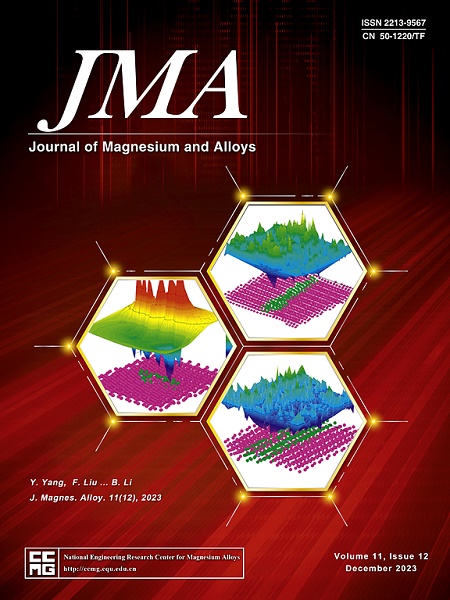Transmutation of zonal twinning dislocations during non-cozone {101¯1} twin-twin interaction in magnesium
IF 15.8
1区 材料科学
Q1 METALLURGY & METALLURGICAL ENGINEERING
引用次数: 0
Abstract
Theoretically, a twinning dislocation must stay on the twinning plane which is the first invariant plane of a twinning mode, because the glide of twinning dislocation linearly transforms the parent lattice to the twin lattice. However, recent experimental observations showed that a twin variant could cross another variant during twin-twin interaction. It is well known that twinning is mediated by zonal twinning dislocations. Thus, how the zonal twinning dislocations transmute during twin-twin interaction is of great interest but not well understood. In this work, atomistic simulation is performed to investigate interaction between twin variants. Our results show that when an incoming twin variant impinges on the other which acts as a barrier, surprisingly, the barrier twin can grow at the expense of the incoming twin. Eventually one variant consumes the other. Structural analysis shows that the twinning dislocations of the barrier variant are able to penetrate the zone of twin-twin intersection, by plowing through the lattice of one variant and transform its lattice into the lattice of the other. Careful lattice correspondence analysis reveals that, the lattice transformation from one variant to the other is close to twinning, but the orientation relationship deviates by a minor lattice rotation. This deviation presents a significant energy barrier to the lattice transformation, and thus it is expected such a twin-twin interaction will increase the stress for twin growth.
镁中非共带{101¯1}孪晶-孪晶相互作用期间带状孪晶位错的嬗变
本文章由计算机程序翻译,如有差异,请以英文原文为准。
求助全文
约1分钟内获得全文
求助全文
来源期刊

Journal of Magnesium and Alloys
Engineering-Mechanics of Materials
CiteScore
20.20
自引率
14.80%
发文量
52
审稿时长
59 days
期刊介绍:
The Journal of Magnesium and Alloys serves as a global platform for both theoretical and experimental studies in magnesium science and engineering. It welcomes submissions investigating various scientific and engineering factors impacting the metallurgy, processing, microstructure, properties, and applications of magnesium and alloys. The journal covers all aspects of magnesium and alloy research, including raw materials, alloy casting, extrusion and deformation, corrosion and surface treatment, joining and machining, simulation and modeling, microstructure evolution and mechanical properties, new alloy development, magnesium-based composites, bio-materials and energy materials, applications, and recycling.
 求助内容:
求助内容: 应助结果提醒方式:
应助结果提醒方式:


